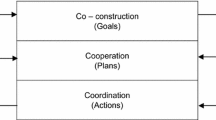Abstract
The present study examined whether early exposure of student Air Traffic Controllers (ATCos) to NextGen automation technology in the form of integrated Data Comm affects the degree to which they come to rely on this tool instead of voice-based, manual tools to manage traffic. The data reported in this study comes from 24 students who took part in one of two semesters of an ATCo training course offered by our organization. One group received little or no early training with integrated Data Comm, managing no aircraft (AC) that were NextGen equipped or only 25% that were NextGen equipped in the first half of the course. A second group managed 75% aircraft (AC) that were NextGen equipped from the beginning of the training course. After the first half of the course, both groups received training with at least 50% NextGen-equipped aircraft (AC). Both groups were tested in a midterm and final exam that required them to manage traffic in a mixed equipage scenario. We found that proficiency of the students predicted their performance. Moreover, by the final exam, students converged on the same strategy, preferring to issue clearances using voice rather than Data Comm, regardless of early exposure to automation tools. This is likely because voice communication is faster than Data Comm, and is associated with greater efficiency of air traffic management.
Chapter PDF
Similar content being viewed by others
References
Federal Aviation Administration (FAA): FAA’s NextGen: Implementation Plan 2010. NextGen Integration and Implementation Office, Washington, D.C. (2010)
Joint Planning and Development Office: Concept of operations for the next generation air transportation system version 3.2 (2010), http://jpe.jpdo.gov/ee/docs/conops/NextGen_ConOps_v3_2.pdf
Durso, F., Manning, C.: Air traffic control. In: Carswell, C.M. (ed.) Reviews of Human Factors and Ergonomics, vol. 4, pp. 195–244. Human Factors and Ergonomics Society, Santa Monica (2008)
Oprins, E., Burggraaff, E., van Weerdenburg, H.: Design of a competence-based assessment system for air traffic control training. The International Journal of Aviation Psychology 16, 297–320 (2006)
Prevot, T., Homola, J.R., Martin, L.H., Mercer, J.S., Cabrall, C.D.: Toward Automated Air Traffic Control—Investigating a Fundamental Paradigm Shift in Human/Systems Interaction. International Journal of Human-Computer Interaction 28, 77–98 (2012)
Kiken, A., Rorie, R.C., Bacon, L.P., Billinghurst, S., Kraut, J.M., Strybel, T.Z., Vu, K.-P.L., Battiste, V.: Effect of ATC training with NextGen tools and online situation awareness and workload probes on operator performance. In: Salvendy, G., Smith, M.J. (eds.) HCII 2011, Part II. LNCS, vol. 6772, pp. 483–492. Springer, Heidelberg (2011)
Vu, K.-P.L., Kiken, A., Chiappe, D., Strybel, T., Battiste, V.: Application of Part-Whole Training Methods to Evaluate When to Introduce NextGen Air Traffic Management Tools to Students. American Journal of Psychology (in press)
Salden, R.J.C.M., Paas, F., van Merriënboer, J.J.G.: A comparison of approaches to learning task selection in the training of complex cognitive skills. Computers in Human Behavior 22, 321–333 (2006), doi:10.1016/j.chb.2004.06.003
Lee, J.D., See, K.A.: Trust in automation and technology: Designing for appropriate reliance. Human Factors 46, 50–80 (2004)
Metzger, U., Parasuraman, R.: Automation in future air traffic management: Effects of decision aid reliability on controller performance and mental workload. Human Factors 47, 35–49 (2005)
Parasuraman, R., Sheridan, T., Wickens, C.: Situation awareness, mental workload, and trust in automation: Viable, empirically supported cognitive engineering constructs. Journal of Cognitive Engineering and Decision Making 2, 140–160 (2008)
Manzey, D., Bahner, J.E., Hueper, A.: Misuse of automated aids in process control: Complacency, automation bias, and possible training interventions. In: Proceedings of the Human Factors and Ergonomics Society 50th Annual Meeting, pp. 220–224. Human Factors and Ergonomics Society, Santa Monica (2006)
Prevot, T.: Exploring the many perspectives of distributed air traffic management: The Multi Aircraft Control System: MACS. In: International Conference on Human-Computer Interaction in Aeronautics, HCI-Aero 2002, October 23-25. MIT, Cambridge (2002)
Rantanen, E.: Development and validation of objective performance and workload measures in air traffic control (AHFD-04-19/FAA-04-07). Federal Aviation Administration Civil Aeromedical Institute, Oklahoma City (2004)
Author information
Authors and Affiliations
Editor information
Editors and Affiliations
Rights and permissions
Copyright information
© 2013 Springer-Verlag Berlin Heidelberg
About this paper
Cite this paper
Battiste, H. et al. (2013). The Effects of Early Training with Automation Tools on the Air Traffic Management Strategies of Student ATCos. In: Yamamoto, S. (eds) Human Interface and the Management of Information. Information and Interaction for Health, Safety, Mobility and Complex Environments. HIMI 2013. Lecture Notes in Computer Science, vol 8017. Springer, Berlin, Heidelberg. https://doi.org/10.1007/978-3-642-39215-3_2
Download citation
DOI: https://doi.org/10.1007/978-3-642-39215-3_2
Publisher Name: Springer, Berlin, Heidelberg
Print ISBN: 978-3-642-39214-6
Online ISBN: 978-3-642-39215-3
eBook Packages: Computer ScienceComputer Science (R0)




